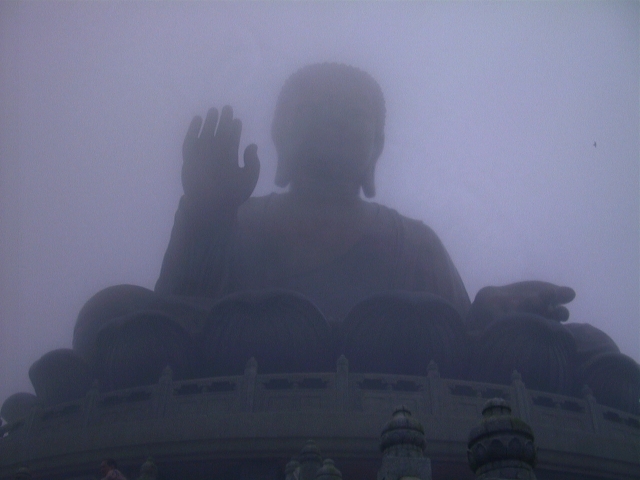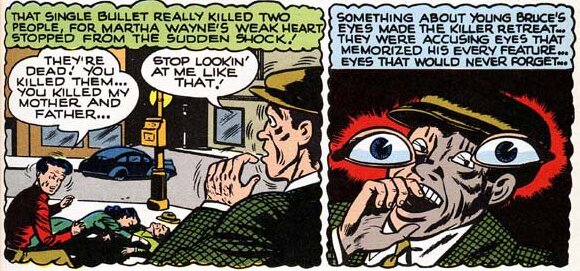RAMANA'S EYES SHONE WITH AN ASTONISHING BRILLIANCE
PAUL BRUNTON at the Ramana ashram, 1931
In 1931, a predecessor by seven years to either Maugham or De Acosta visiting the Ramana ashram and their reports of astonishing eye contact sequences, the Maharshi was visited by a man of deep spritual conviction by the name of Paul Brunton. Brunton, through his critically acclaimed book A Search in Secret India (1934), is considered to be the single most important person in the opening up to the west of the Bhagavan Sri Ramana Maharshi --- possibly influencing Maugham, but De Acosta for sure.
In his book Brunton describes several instances of being highly impacted by eye contact sequences through the direct influence of the Maharshi. When Brunton first arrived at the ashram it seemed the holy man was in continual deep meditation called Samadhi. Although Brunton expected something to happen, for him he writes: "the minutes creep by with unutterable slowness." In the end, however, the sage's total quietness communicated itself to Brunton.
On Brunton's last day at the ashram, Sri Ramana Maharshi again remained incredibly silent, but this time the Maharshi rested his peaceful gaze on Brunton specifically, which he describes as follows:
"(Ramana's) eyes shone with an astonishing brilliance. Strange sensations begin to arise in me. Those lustrous orbs seem to be peering into the inmost recesses of my soul . . . I become aware that he is definitely linking my own mind with his, that he is provoking my heart into that state of starry calm which he seems perpetually to enjoy."
Time stood still. Somehow, unbeknown to Brunton one disciple after another apparently left the meditation hall until only the sage and Brunton remained. Brunton continues:
"I am alone with the Maharishee! Never before has this happened. His eyes begin to change; they narrow down to pin-points. The effect is curiously like the 'stopping-down' in the focus of a camera lens. There comes a tremendous increase in the intense gleam which shines between the lids, now almost closed. Suddenly, my body seems to disappear, and we are both out in space."
In 1936 Brunton noticed a westerner "gone native squatting along the wall" amongst the crowd in the meditation hall. That man turned out to be a person also of some eventual spritual reknown named Alfred Sorensen, known later as Shunyata. Brunton introduced him to the Maharshi and afterwards Ramana said that Shunyata was "a rare born mystic." About a year after the first visit Shunyata was sitting, along with other visitors, in front of Ramana. He had not asked a question nor made his presence known in any particular way when:
"We (became aware of) a special effulgence specially radiated and directed towards our form (from Ramana). . .five English words came suddenly upon us out of Silence. These were totally unsolicited but we took them as recognition, initiation, name and mantra: 'We are always Aware, Sunyata.'"
AFTER BRUNTON, MAUGHAM AND DE ACOSTA
The following is found in Chapter 9, page 71 of Arthur Osborne's My Life and Quest (2001), at the link so sourced. Osborne, now deceased (1970), was a highly accomplished and well received author of a number of excellent books on Sri Ramana. In the paragraph below Osborne is writing about the first time his wife Lucia Osborne saw the Maharshi and sat before him:
"A day or two later my wife entered the hall and sat down.
Immediately Bhagavan turned his luminous eyes on her in a
gaze so concentrated that there was a vibration she could actually
hear. She returned the gaze, losing all sense of time, the mind
stilled, feeling like a bird caught by a snake, yet glad to be caught.
An older devotee who watched told her that this was the silent
initiation and that it had lasted about fifteen minutes. Usually
it was quite short, a minute or two. She wrote to me that all her
doubts had vanished; her objections no longer mattered. The
idea of making a sculpture had been put aside; it seemed
presumptuous. She had complete faith. She knew now that the
teaching was true and that nothing else mattered."
(source)
Notice a couple of things --- from his mere gaze there was a vibration she could actually hear and as well, she lost all sense of time. There is a staggering similarity between what Osborne's wife perceived and felt sitting before Ramana and my own experience cited previously above, seeing him at the stage stop. If you recall I write:
"As though an electric current was passing through me he looked right into my eyes with an intensely piercing gaze, eyes shining with an astonishing brilliance --- and somehow TIME SEEMED TO SLOW --- maybe even stopping altogether. From far away I felt myself losing balance, all the while trying to brace myself with one arm while trying to hold the lantern high with the other. I weighed a ton and could barely move. In ultra slow motion the light, moving now at such an overwhelmingly reduced rate I could hear it."
THE LAW OF VIBRATION
A little about the "vibration" both Lucia Osborne and I reported as having experienced. In recent years, vibrations in the semi-spiritual mental thought process realm have risen to be the 'in thing' in, for example, what has come to be called New Age and New Thought. Both promote a variety of purported scientific, albeit vague when applied, universal laws underlying the natural order of things given names such as the Law of Attraction and the Law of Vibration. One of the top dogs in the area is an author that pretty much moved quantum theory into popular culture, Gary Zukav, as found in Dancing Wu Li Masters. As it relates to what I am writing about specifically in this paragraph, although the original source is a little fuzzy, Zukav has been credited with the following:
"Each personality draws to itself personalities with consciousness of like frequency or like weakness. The frequency of anger attracts the frequency of anger, the frequency of greed attracts greed, and so on. This is the law of attraction. Negativity attracts negativity, just as love attracts love. Therefore, the world of an angry person is filled with angry people, the world of a greedy person is filled with greedy people, and a loving person lives in a world of loving people."
Although Zukav does brush up against a certain aspect of what both Lucia and I have experienced, I would be hard pressed to agree in totality with him or necessarily where he is coming from per se.' That is to say, if the master of quantum physics is advocating the frequency being an aspect of a quantized physical property for example --- or, if not, what then, is the connection to quantum physics?(see)
As for either law being a law, universal, natural or otherwise, I typically fall back on the works of W.D. Gann (1878-1955) who, back in the early 1900s advocated what he called the Law of Vibrations. His description of the fundamentals of the law, which at a early age I must have innately agreed with on some level because of my interest in similar areas, reads thus:
"(T)he layman may be able to grasp some of the principles when I state that the law of vibration is the fundamental law upon which wireless telegraphy, wireless telephone and phonographs are based. Without the existence of this law the above inventions would have been impossible."
What I take away from Gann, after reading his works, is that his Law of Vibration, if it were to be compared, would replicate in overlay the same outcome properties found in the physical laws of vibration he talks about above that contributes to the functional outcome required for radios et al to be successfully operational, such as electromagnetic radiation, their cause and effect, etc., except the totality of his Law of Vibration, from the grounding source to delivery ability, as opposed to being physical in nature, are incorporeal.
NOTE: Regarding the Osborne's, both Arthur and wife Lucia, for those who may be so interested, their son Adam Osborne, from a mere toddler to around age 11, basically grew up in and around the Ramana ashram. As young boys the same age, the two of us met at the ashram. Osborne's insights and recall into those times after we eventually met years later as adults, as found in the page so linked to his name above --- and too long to go into here --- helped enormously in filling in a number of childhood gaps. For more please see:
THE CODE MAKER, THE ZEN MAKER
SHANGRI-LA, SHAMBHALA, GYANGANJ, BUDDHISM AND ZEN
EYE SEQUENCES: MISSING THE BOAT
When an "eye contact" sequence similar to the ones described above befalls someone, it should be noted that the in-depth quality of that phenomenon is not always universally experienced by everyone under every circumstance. To reach a true significance it has to be reciprocal at some level.(see)
To wit, as found in the all important Majjhima Nikaya MN 26
Sutra, when the Buddha was walking along the road to Benares following his post-Enlightenment pause he was approached by a wandering ascetic, an Ajivika, a person of certain spiritual accord himself. According to the custom of the time the ascetic, one Upaka by name, greeted him and asked who his teacher was or what doctrine he followed. In contrast to the usually quoted "To know is not to know, not to know is to know" the Buddha himself told the wanderling that he was "the Victor and Conqueror of the World, superior to gods and men, an All-Enlightened One beholden to no teacher." The wandering ascetic, although apparently a highly spiritual person in his own right known as a Parityajya Vrajati could see NO hint of anything of the Buddha's nature and wandered off as wanderlings are oft to do, mumbling under his breath something like, "If it were only so!"
Interestingly enough, Upaka was not the only one to walk away from the Buddha, under virtually the same circumstances. In the Madhupindika Sutta, known as The Ball of Honey or Honeyball Sutra a man,
Dandapani the Sakyan, was out roaming in the woods and ran across the Buddha sitting under a tree. He exchanged courteous greetings with him then asked "What is the contemplative's doctrine? What does he proclaim?" The Buddha's response was not to dissimilar to the samething he told Upaka, and Dandapani, "upon hearing his response shaking his head, wagging his tongue, raising his eyebrows so that his forehead was wrinkled in three furrows -- left, leaning on his stick."
Hard to imagine a person could actually come in contact face-to-face with the Buddha himself and NOT be able to judge the level of his Attainment. So too, then, it would not be totally out of hand that a person, such as Maugham for example, or anybody else for that matter, might not fully grasp, yet still feel somehow, a certain something. That "certain something" is what drove Maugham to go to India. After his meeting with the fully Attained Maharshi, however, it appears he understood much clearer the overall concept and was thus then, able to write and complete The Razor's Edge after what was actually his THIRD major attempt using the exact same plot.(see)

CAFE DU' DOME, PARIS. THE MAN JUST TO THE LEFT OF THE WAITER IS THOUGHT TO BE MAUGHAM.
(please click image)
WHY WAS SOMERSET MAUGHAM DRIVEN TO GO TO INDIA
AND MEET THE BHAGAVAN SRI RAMANA MAHARSHI?
(please click)
Fundamentally, our experience as experienced is not different from the Zen master's. Where
we differ is that we place a fog, a particular kind of conceptual overlay onto that experience
and then make an emotional investment in that overlay, taking it to be "real" in and of itself.

(PLEASE CLICK)









 ---
---
